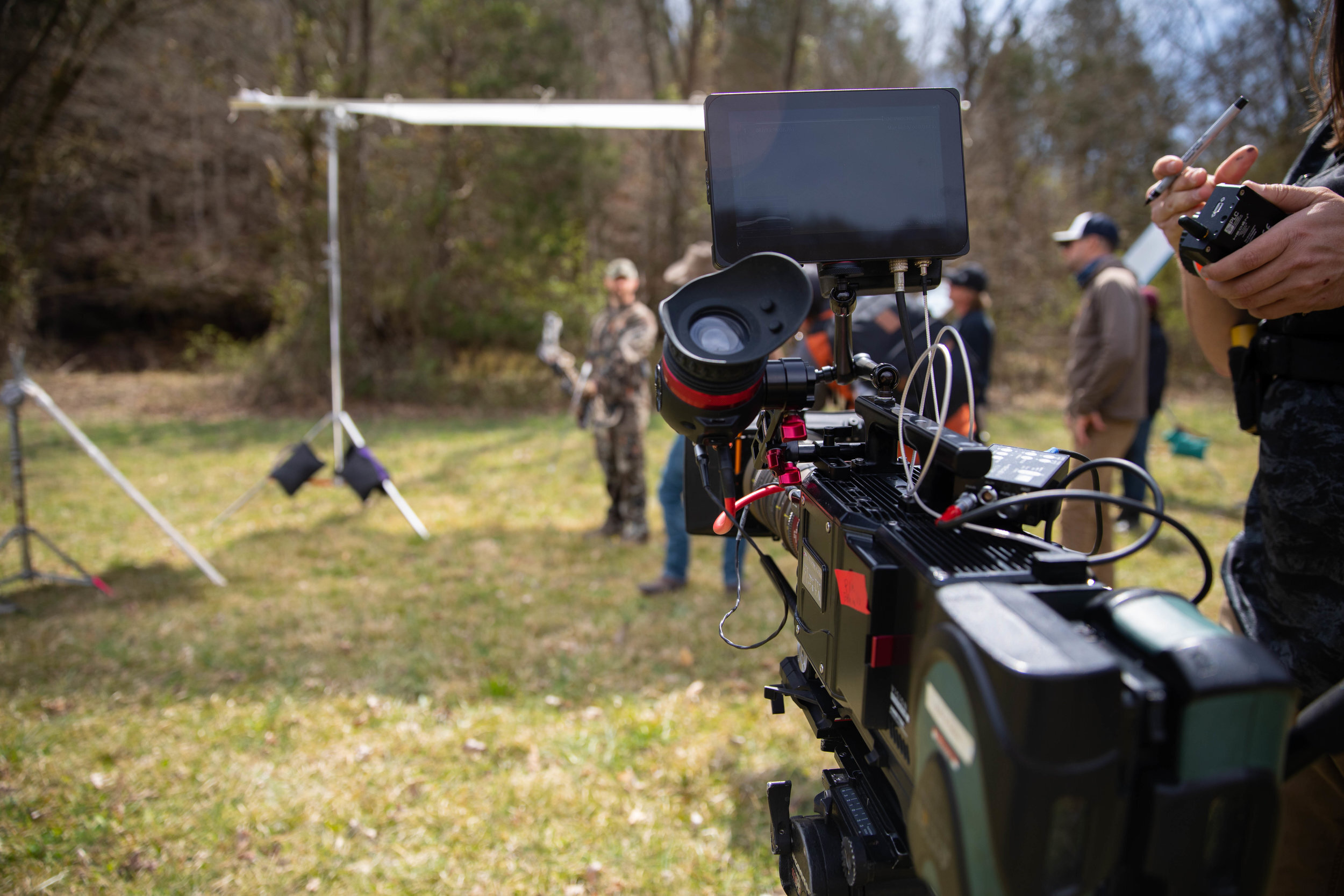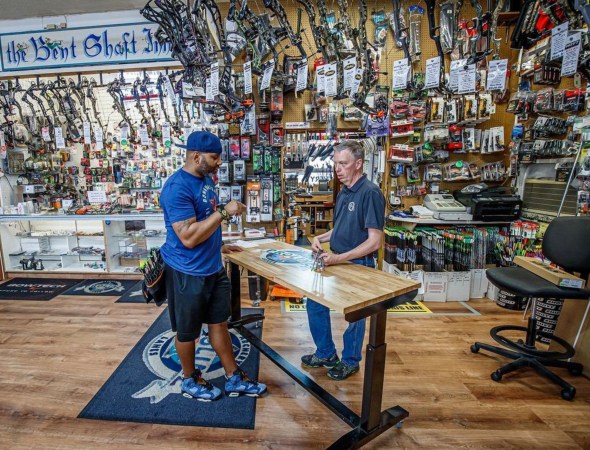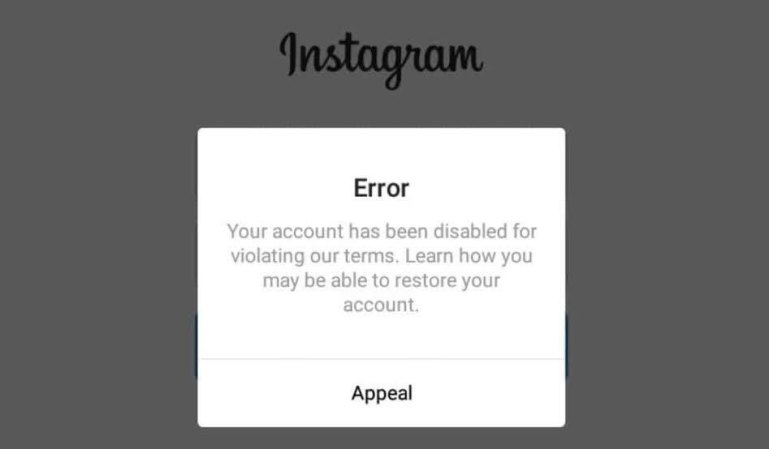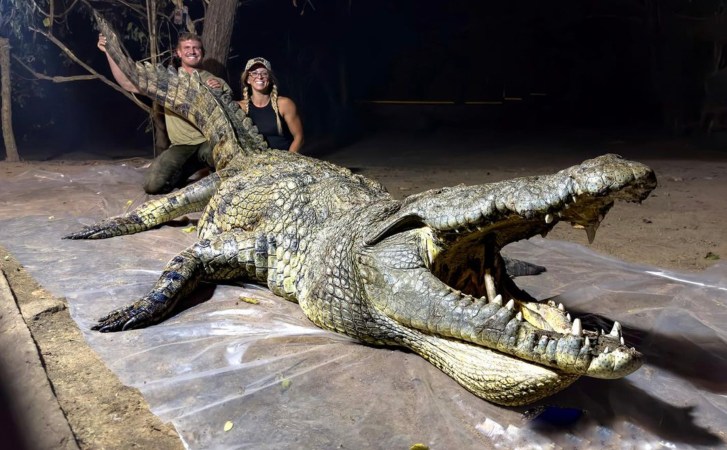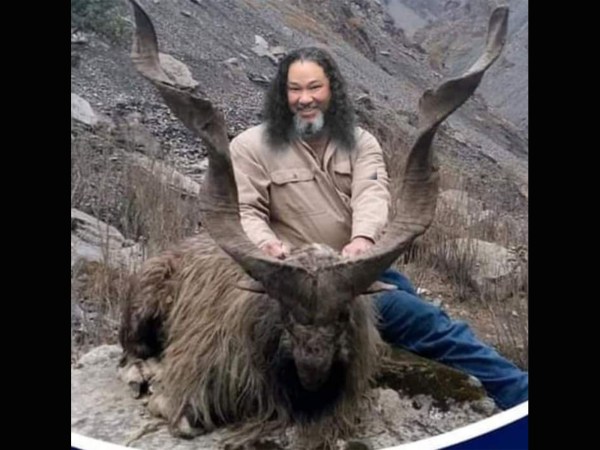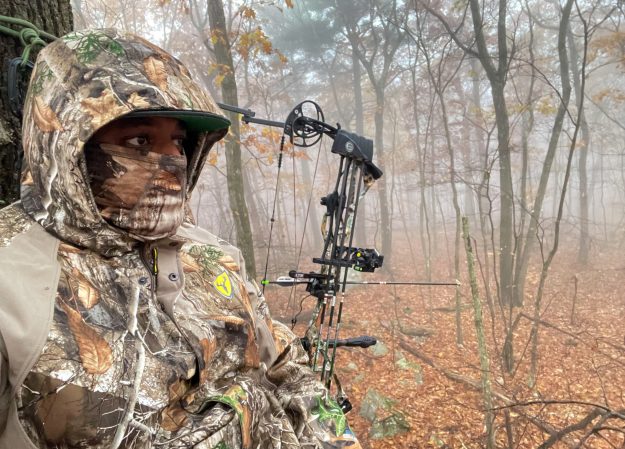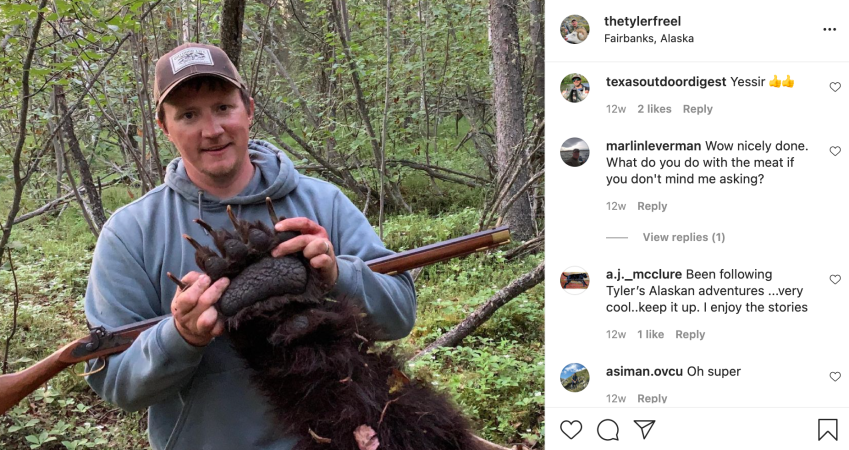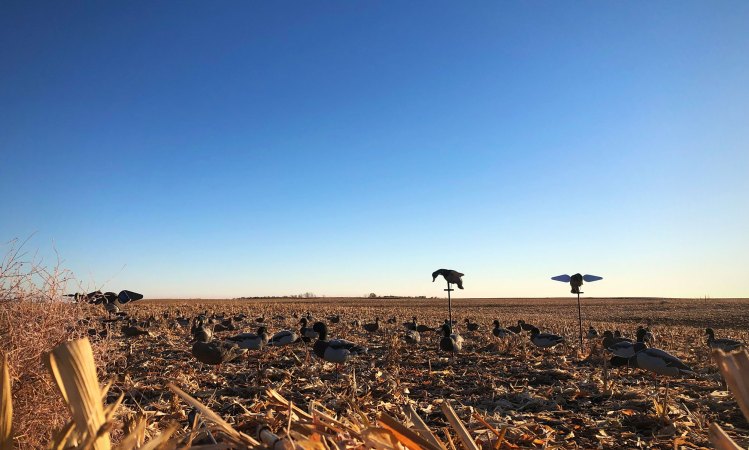The first rule of being a hunting or fishing social media influencer is don’t call yourself an “influencer.” The second rule? Don’t get banned. After that, well, there really are no rules.
In the Wild West of influencer marketing, you’ll see these kinds of hunters and anglers in your social media feeds every day. They might be hyping up a product, touting a new tactic, giving advice, or telling a story. While they’re at it, they might casually mention a few gear brands—or tag every single brand they can cram into the frame. Hunting and fishing gear manufacturers now regularly rely on these social media personalities to help promote their brands and products.
Presumably these hunting and fishing Instagrammers, YouTubers, and increasingly TikTok users promote brands because they get something in return. But can influencers really make a living off of social media? How much do companies actually pay them to promote their products? Can you believe anything these people say when it comes to gear?
We spoke with several hunting and fishing marketing experts to understand how influencers work within the space. We also interviewed four hunters and anglers who have small to medium social media audiences (7,700 to 66,000 followers on Instagram) to understand how they leverage their accounts, if they make money from them, if followers can really trust their gear content, and what, if any, good comes from what they do.
Do Hunting Influencers Get Paid?
Yes, many hunting influencers are compensated for their work with brands. But compensation can take a variety of forms. Top influencers might land a year-long deal to endorse a brand. Mid-level deals might require an influencer to post photographs or video of themselves using a piece of gear, and also create content around that product for the brand to post. In the smallest deals, companies simply give an influencer free product to use and include in their content. Generally speaking, the larger their audience and the more engagement an influencer drives, the more an influencer can make.
“Some people make a ton of money and others make very little,” says Ryan Chuckel, founder of Gunpowder Inc., which is a marketing agency that represents a variety of major outdoor companies.
Top-Level Influencers
Top-level influencers often make money off their personal brand by nailing down sponsorships from hunting and fishing companies. So what exactly does the company get from a deal like this?
“You get to use their name and likeness, they show up at your booth at a trade show, maybe you get advertising on their channels, and they’ll use your product in their content,” says Chuckel. “In some cases it’s very contractual in terms of the number of posts. In some cases they’ll just incentivize an influencer to deliver a certain number of eyeballs [impressions]. But ultimately, I look at those [kinds of sponsorships] as the next wave of what the industry has always done, which is find people who have credibility and influence, and strike deals with them to represent your brand.”
These deals are often made with people who blur the line between influencer and traditional hunting personality. They have a variety of platforms (including TV shows), and social media is included in the mix.
“In the hunting and fishing industry I can think of probably a half-dozen influencers who I know have deals that are worth $400,000 to $500,000 collectively,” says Chuckel. “The influencer part is kind of a gray area because they might have a TV show, too, but social is definitely a part of the deal.”
Merchandise—including hats, t-shirts, and stickers that are styled after inside jokes and imagery from the content—is another monster revenue driver for top influencers.
“I know several influencers who have either started with a podcast or YouTube channel who are now making six figures on merchandise alone on their own personal brand,” says Chuckel. “There are several in the hunting industry who are making north of a quarter million dollars a year on just merchandise.”

Sometimes influencers make commission on sales that result from followers clicking on their specific link to a store website, also known as a UTM link, which can track how many sales that one influencer drives from a single piece of content. Put more simply: An influencer posts about a gear item and includes a link to buy the product; the influencer then gets a small cut (usually somewhere in the ballpark of 3 to 10 percent) for each purchase made from their link.
This affiliate marketing strategy has been particularly successful in fishing media, where popular YouTubers will share links to all of their gear in the descriptions of their videos.
“There’s one particular YouTube channel in the fishing space that is closely tied to a major fishing retailer with a big online business,” Chuckel says. “That one influencer drives more conversions [sales] on that website than any other source of traffic. And that influencer is getting paid on it, so it would stand to reason that the influencer is making hundreds of thousands of dollars a year just on affiliate.”
Many traditional media outlets, from the New York Times to the Wall Street Journal to Outdoor Life, use a similar tactic by linking from gear reviews to online retailers like Amazon or Cabela’s, and then earning commissions on those sales. However, these sites publish their editorial standards and testing guidelines, ensuring that products are fairly reviewed. They also disclose that they earn commissions on stories. Publications like OL review products rigorously and then make money if a reader decides to purchase a gear item through a link. They do not receive payments directly from manufacturers to publish only positive things about a product. The same isn’t always true in the influencer world.
There are relatively few top-level hunting and fishing influencers who would be able to ink high-level deals. Top Instagram accounts in the hunting space include:
- Cameron Hanes (1.4M on Instagram)
- Steven Rinella (1.1M on Instagram)
- Hannah Barron (1.1M on Instagram)
On the fishing side, YouTube and TikTok tend to bring larger audiences. Top pages include:
- Robert Terkla / Lunkers TV (2M YouTube subscribers)
- Jon Barzacchini / John B. (1.7M YouTube subscribers)
- Justin Rackley / LakeForkGuy (1.02M YouTube subscribers)
- Macy Watkins (1.1M TikTok followers)
- Jason Brenic / Piscifun (1.2M TikTok followers)
- Ben Friedman / youngpageviews (678K TikTok followers)
“There are not a lot of six-figure earners out there,” said one marketing manager for a major outdoor company. “So if people are reading this article thinking that this is how they’re going to make a living … they should know that it’s hard. You have to become an expert. Just having an audience isn’t going to earn you six figures.”
Content Creators
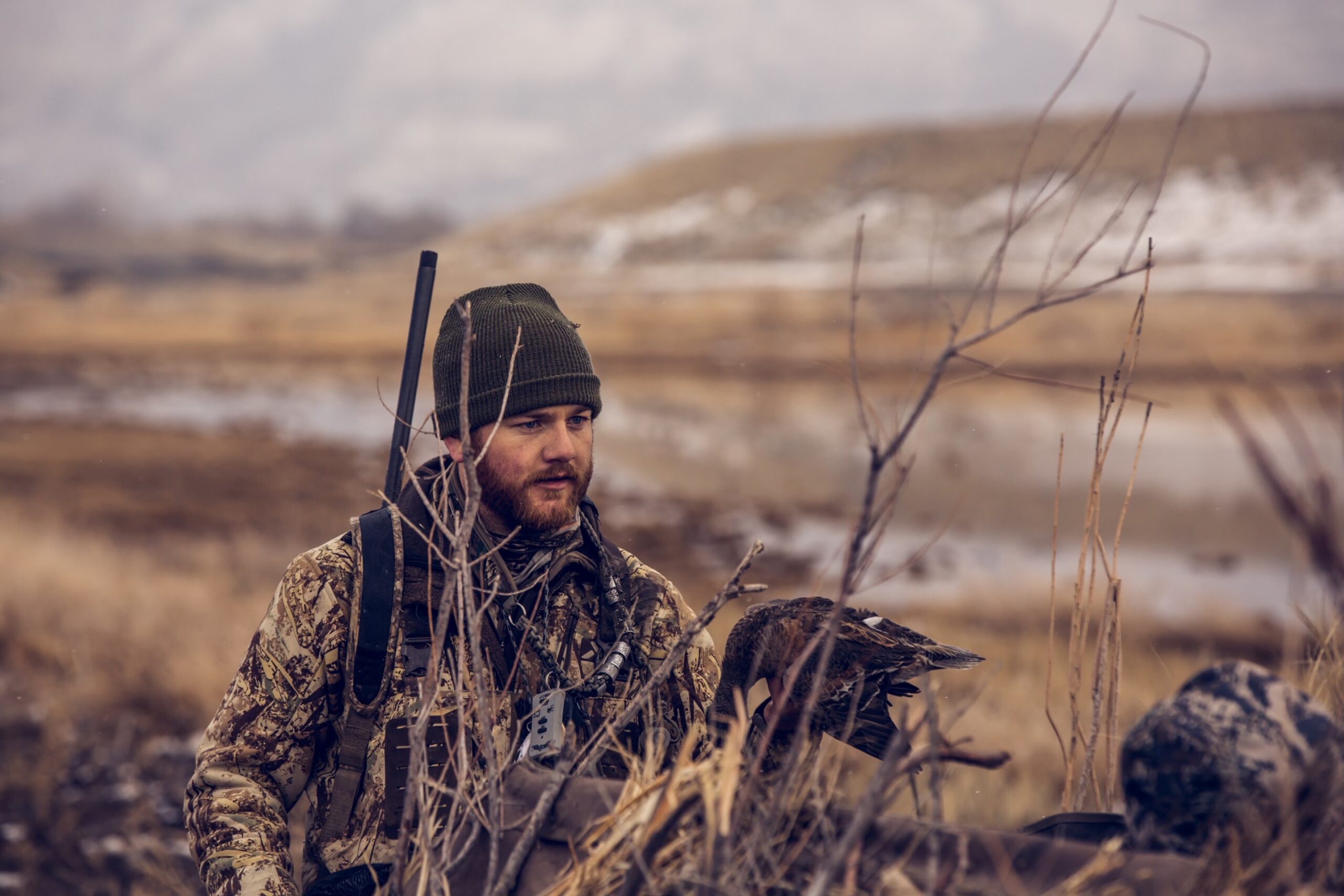
There are far more mid-level influencers whose roles are really more like content creators for a brand. One of those folks is hunting media professional and Lucky Duck Decoys marketing manager Sean Weaver.
Like many other influencers, Weaver’s contracts often require him to wear multiple hats.
“Because I was a photographer, there was a hybridization there,” says Weaver. “I would provide a certain number of photos per year as part of a photo contract, but also post several times a year. My best gig was about $3,000 a month, but it was a hybrid role.”
Specialized outdoors influencers with photography expertise are a dream come true for gear companies, Weaver says. Why pay a union photographer or cinematographer $850 to $900 a day for a three-day shoot, hire a model or hunting personality, fly people to the location, rent equipment, pay for pre- and post-production, and bleed money in the process when you can pay someone who already uses the product in an authentic setting and can snap some pictures while they’re at it? Plus, that person has 50,000 followers on Instagram, and yes, they’ll be posting photos there, too.
“The cherry on top is if that photographer or social media personality has a following to boot,” Weaver says. “They’re not just a good photographer, but they can spread brand awareness to tens of thousands of people, too.”
Chuckel says this is the segment of the influencer world that he’s most optimistic about, since it requires influencers to create quality content—not just drive a ton of views.
“I think this is actually a real value to the industry. It’s taken social influencers and taught them it’s not just about getting eyeballs, it’s also about the quality of content,” says Chuckel. “[They’ll make] meaningful money. I would say that some of those people are able to make in the high five figures being a social influencer and content creator. There’s a decent number of those in the fishing and hunting space.”
Aspiring Influencers
There are probably more aspiring influencers on social media than folks who have actual influence. These are people who have small- to mid-sized audiences but no real way to monetize their content. Their main compensation is free gear that brands will give them to include in content.
“There are a ton of people who want to be in the space, they want to be influential, they believe it’s a path to combining their passion with a way to make money. But a lot of them never get beyond the point of just getting free product,” says Chuckel. “[Getting free gear] is surprisingly easy for a lot of them because on newer platforms, like TikTok, people can scale quickly. They can demonstrate big numbers. TikTok is a platform that a lot of brands don’t necessarily want to get into, can’t get into, or don’t have the resources to. So for brands like that, giving product to someone who has a big TikTok following is kind of a no-brainer. A lot of brands have tended to kind of look the other way in terms of the quality of that content—or the quality of the influencer—just because the numbers are so gaudy on that platform. When brands are only giving out product, they tend to have a higher risk tolerance.”
One marketer from a major company in the firearms/ammunition space said in the past he had “dabbled” with signing on social influencers to paid deals, but is now starting to back away from it. He’s much more likely to give an influencer product to use because it’s lower cost, and doesn’t create bad exposure for the brand if the influencer creates shoddy content.
“We never want to make someone look like an expert when they’re not,” he says.
Can We Trust Influencers’ Gear Content?
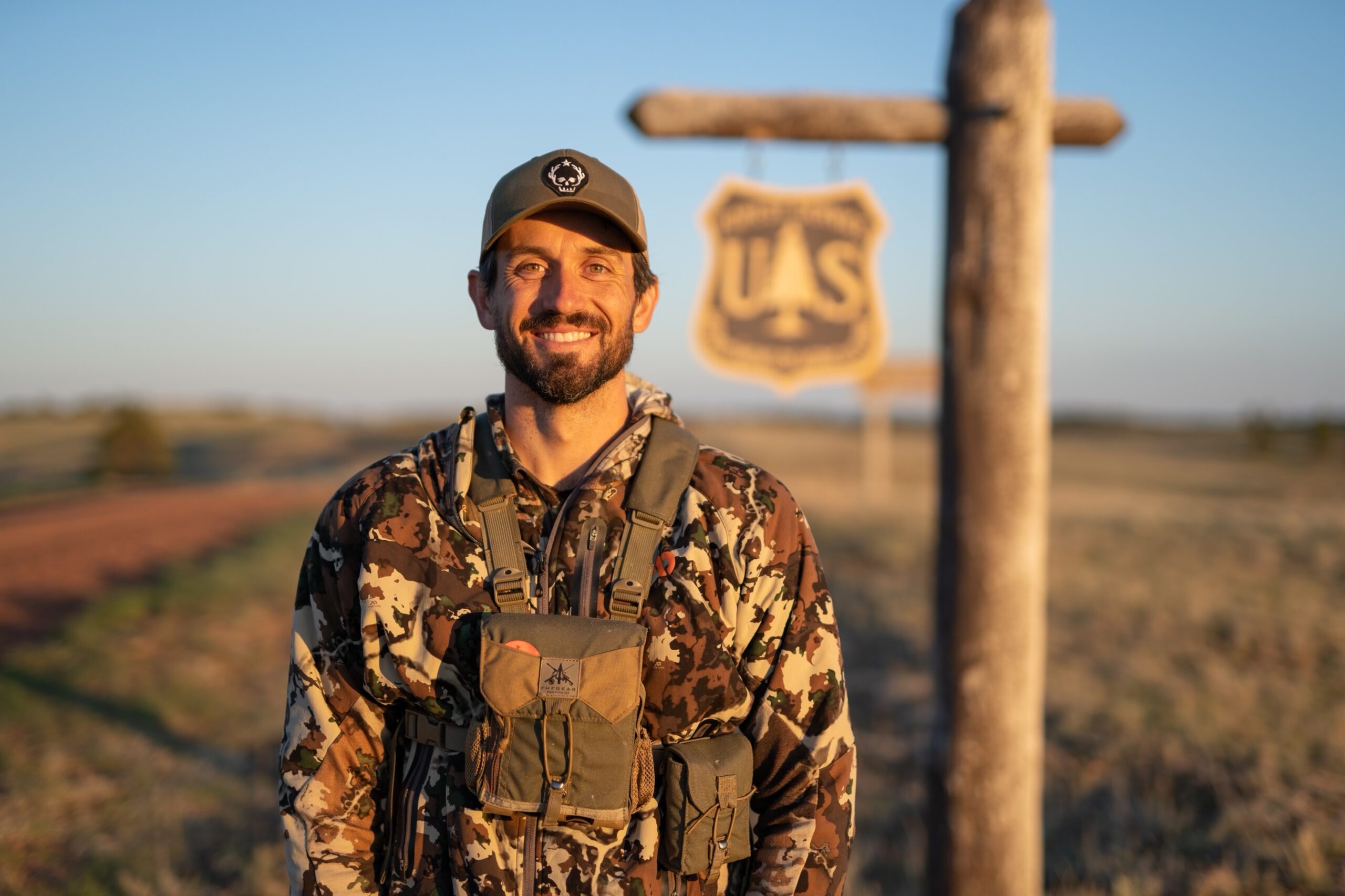
As a seasoned photographer, Sam Soholt also does a lot of hybrid photography and promotional work with brands. He makes a living shooting photo campaigns and working with gear companies to promote their products. He is also a conservation advocate and the operator behind Public Land Tees, an apparel brand that supports conservation non-profits. He promotes Public Land Tees on his Instagram page.
As a kid, Soholt wanted to make a living filming hunting television shows. He worked in that sphere for a while before transitioning to freelance photography and videography in the early 2010s as Instagram was becoming popular.
When asked about disclosing his relationships with these brands when reviewing or pushing their gear in Instagram posts, he says it doesn’t seem necessary.
“I’ve never tried to hide the fact that I get gear and get paid to do what I do,” Soholt explains. “I think there’s a lot of that in this space, but I don’t think it’s lost on anybody that I work for a bunch of companies. You’re always going to have people who don’t think you can leave an objective review on something. For me, if I have a partner and there’s a piece of gear that I’ve tested and I don’t like it, I typically just don’t talk about it.”
Since he makes a living as a freelancer, Soholt says he doesn’t have time to fumble around with inferior gear that he can’t reasonably stand behind. Not only because this might frustrate a few followers who end up hating the products he suggests; but because his lifestyle puts a lot of wear and tear on his equipment.
“I’ve been very selective in who I work with,” he says. “I will only work with companies whose gear I would use in the first place, and I know that’s a very political thing to say, but it’s the truth. If I’m spending that much time in the field, I want to use stuff that I know is going to work for me every single day.”
Not all influencers have the same perspective as Soholt. This can be seen when large non-endemic brands—like beer, beverage, and truck companies—decide they want to advertise in the outdoor space using influencer marketing.
“You’ve got these instances of non-endemic mainstream brands popping in and really doing wild stuff,” Chuckel says. “These big brands need to be relevant in hunt and fish. But they are based in New York and their teams don’t know the category. So they use analytics tools that tell them who has the biggest following. They then hand that data to an intern and say ‘make sure these people aren’t weird.’
“Then they narrow it down to the people who they think fit the brand the best and have the best analytics and then it’s literally just pay for play. Here’s a dollar amount, here’s what we want you to do. And lots of influencers do it.
“I had a conversation with a notable figure in the outdoor industry who has a pretty extensive following on the fishing side, and this person told me that for a single post they were paid $10,000. They were given strict guidelines about what they should say, but they could put it in their own voice and use their own imagery.”
But within the endemic hunting and fishing space, it’s in the gear companies’ best interest to make sure the influencers they work with can promote their products with authenticity, Leupold Optics strategic partnerships manager Kayley Anderson tells Outdoor Life.
“Our influencers are relentless hunters, shooters, anglers, guides and outfitters, and extreme athletes who are in the field using our product day in and day out … They would not use or promote products they did not trust in those circumstances—they simply cannot afford to do that,” Anderson says. “Consumers are wise enough to see when sponsorship is just bought versus earned, and that is why we take it so seriously to work with the highest performing and credible partners in the industry so that their consumers know their recommendations and their referral can be trusted.”
Leupold puts potential social ambassadors through the same vetting process they would a television partner or any other promotional figure.
“First and foremost, the partners we work with must be a good fit for our brand. They must believe in our values and strategic direction and embody that in everything they do. I assess that with three main questions. Do they align with our archetype? Do they speak to our core consumer? And do they align to our tone of voice?”
If an influencer meets all three of Anderson’s criteria for a good Leupold ambassador, then she looks at a variety of data-driven metrics, like if the person’s social media audience is growing, how often they post, and how often they respond to comments. If they meet Leupold’s standards, then Leupold might enter a formal contract with that personality or strike up an “informal, product-driven relationship,” as Anderson puts it. She says that while getting blowback for working with influencers to help market product is inevitable, she tries to find personalities whose passion for the Leupold brand would shine no matter what—contract or no contract.
“There are a lot of content creators out there, and not all of them are being vetted. We must be very strategic and prioritize who we choose to work with,” Anderson says. “There is a lot to sift through. That is why we take the evaluation and vetting of partners so seriously.”
To Disclose or Not Disclose?
There are, of course, actual guidelines around sponsored, endorsed, and branded social media content. The Federal Trade Commission has a nine-page document covering its guidelines for influencers. Some of the highlights include:
- If you endorse a product through social media, your endorsement message should make it obvious when you have a relationship (“material connection”) with the brand.
- A “material connection” to the brand includes a personal, family, or employment relationship or a financial relationship – such as the brand paying you or giving you free or discounted products or services.
- The disclosure should be placed with the endorsement message itself.
- If making an endorsement in a video, the disclosure should be in the video and not just in the description uploaded with the video.
- Make disclosures even if you think your evaluations are unbiased.
Instagram also has a thorough branded content guidelines page in which it states: “As a creator, if your content promotes any products or services and you were paid to include them, or even if you received the product for free, that means you’re being paid to share branded content.” Instagram instructs creators to use its “Branded Content Tag” so followers can see when content has been monetized.
Far beyond the hunting and fishing space, the Australian Competition and Consumer Commission announced that it was sweeping a range of social platforms to find misleading testimonials and endorsements by influencers, according to a story by the Guardian. The ACC is focusing on fashion, beauty, travel, health, and fitness categories where influencer marketing is most popular.
Influencers who don’t properly disclose paid relationships could be in violation of the Australian consumer law, which can carry penalties of up to $2.5 million for individuals, according to the Guardian.
Is a similar crackdown coming to hunting and fishing social media in the U.S.? Probably not anytime soon. But all the marketing folks we interviewed said that the biggest brands and influencers are getting a lot savvier about their marketing practices and generally follow the proper rules and guidelines. Some of the smaller brands and influencers likely don’t know the disclosure rules, however, or don’t care to know the rules.
Are Influencers Actually Influential?
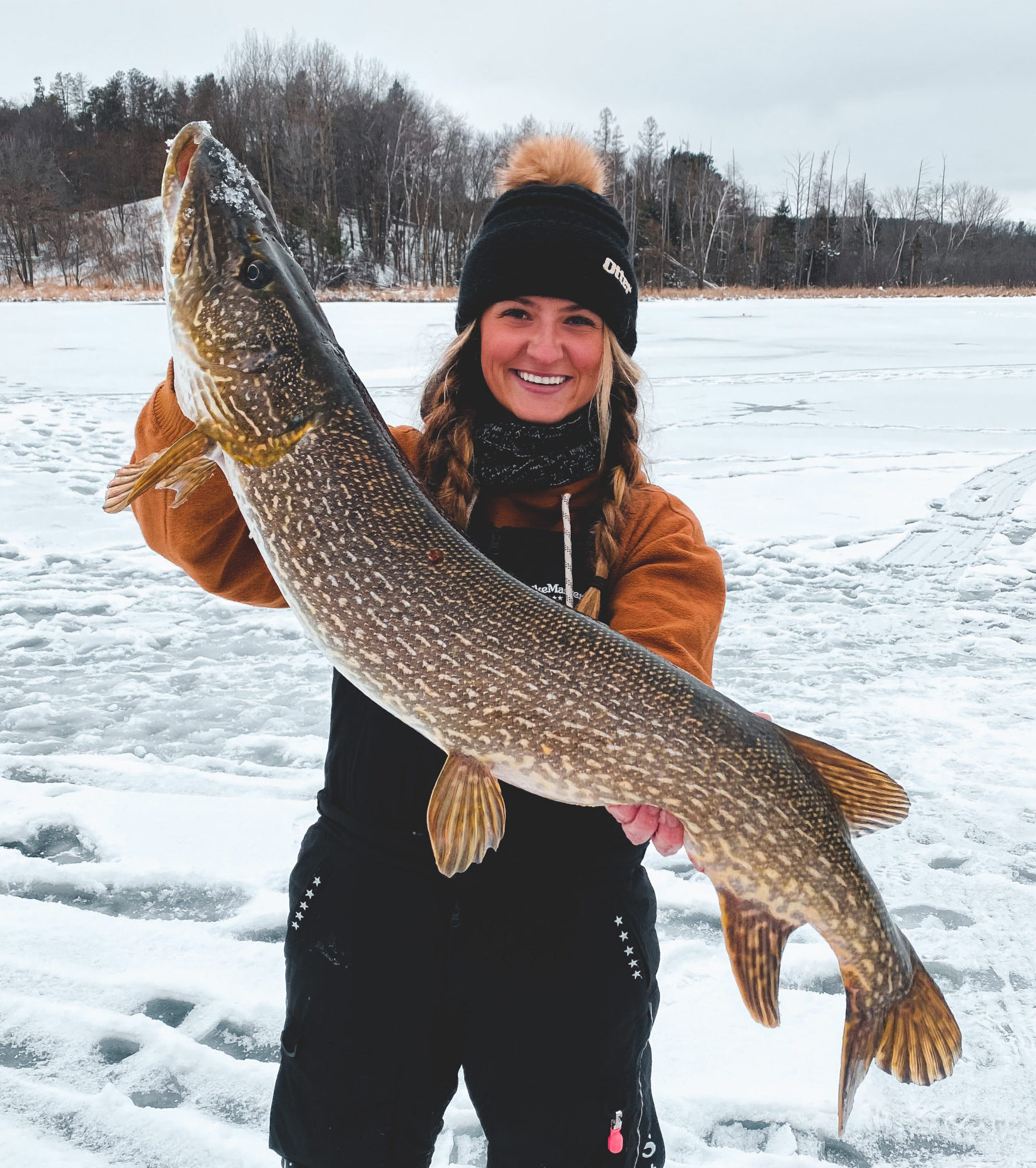
There are a couple ways to look at this question. In terms of influence within the industry, the answer is, unquestionably, yes.
“This is a way, whether anyone likes it or not, that people are being influenced. It’s happening,” says Chuckel. “If you’re not doing this, you’re missing a huge part of the market.”
Chuckel estimates that in the hunting and fishing space, “safely 10 percent to 20 percent of the industry’s total marketing spend is [for] influencer-type content creation, distribution and associated social media efforts.”
Influencer marketing could grow to be especially important for firearms and ammunition companies, which have advertising restrictions on many digital platforms (these companies are unable to buy Google ads or boost advertisements on Facebook, for example). So influencers are a relatively new way for companies to legally reach audiences on social media.
“There are firearms companies that are running out of places to spend money, to be honest,” Chuckel says. “So [influencers] are a really viable place to put some of it.”
The downside is that tracking online sales is much more fraught in the guns and ammo world, since almost all sales will go through a third-party retailer. And that inability to track sales directly and evaluate an influencer’s effectiveness can lead to low-quality content. (Think scantily-clad women and amateurs doing firearms coverage.)
“It makes it harder for us to evaluate effective marketers,” says a marketing professional from a top company in the firearms/ammunition space. “All we have to go with—because we can’t track sales and give them codes to track sales very well—is just evaluating them based on audience numbers and basic media metrics. So I think that’s why you see a lot of bikini stuff, because there’s no proof against that being monetized. We don’t have a way to prove it’s not effective.”
But broadly speaking, Chuckel says that analytics tools are getting better and marketing managers are getting more sophisticated. He hopes that’s going to improve the quality of content across all the platforms.
“The industry is recognizing it and finding ways to get better at it,” he says. “I see brands placing less importance on just who gets a lot of impressions and being more analytical and thoughtful [about who is creating quality content].”
And aside from their role in the industry, even mid-sized influencers can have an impact on their followers.
“If you think about Steven Rinella and the Hunting Public, I wouldn’t put myself in that category. I don’t think I’m an expert. I’m very honest and open about that. But I think that’s inspiring to people,” says Maggie Carsello, a hunting and fishing influencer and Vortex social media manager. “I don’t think I’m changing the world. I don’t think I’m sharing the most insightful information. But I’d like to think that I’m influencing or inspiring people in my own way by just being myself.”
Social media followers tend to comment unabashedly about the content these hunters and anglers post—whether those opinions are good or bad. Carsello has enjoyed the myriad positive interactions she’s experienced with her followers.
“I really fell in love with people reaching out to me, even if just to ask for advice on gear, and especially women. I’ve had a lot of women reach out and say it’s nice to see other females in the industry getting out and representing them in a respectful way,” she says. “I went to Cabela’s one time and a father and daughter came up to me and recognized me from my Instagram, and I honestly teared up. She was getting a little pink tackle box. I’ve had a lot of dads reach out and tell me I’m a positive role model for their daughters. That’s the stuff I really enjoy.”
It’s worth noting that not every hunting social media personality monetizes their account. Decidedly non-influencer and Arkansas waterfowler Jonathan Wilkins likes bringing new people, specifically non-traditional hunters, into the “niche-within-a-niche” world of waterfowl hunting through his personal brand, Black Duck Revival. But he doesn’t use BDR’s Instagram account and its 7,700 followers to make money. Wilkins is technically a Sitka ambassador and he gets some gear from them, but he’s also a freelance writer who gets paid to write articles for Sitka’s blog, among other outlets. He hosts the BDR podcast, and drives around the country hunting out of his BDR-branded van. He also converted an old church into a duck camp where he guides occasional waterfowl hunters. In other words, social media is little more than a creative tool Wilkins uses to promote his other, more pressing pursuits.
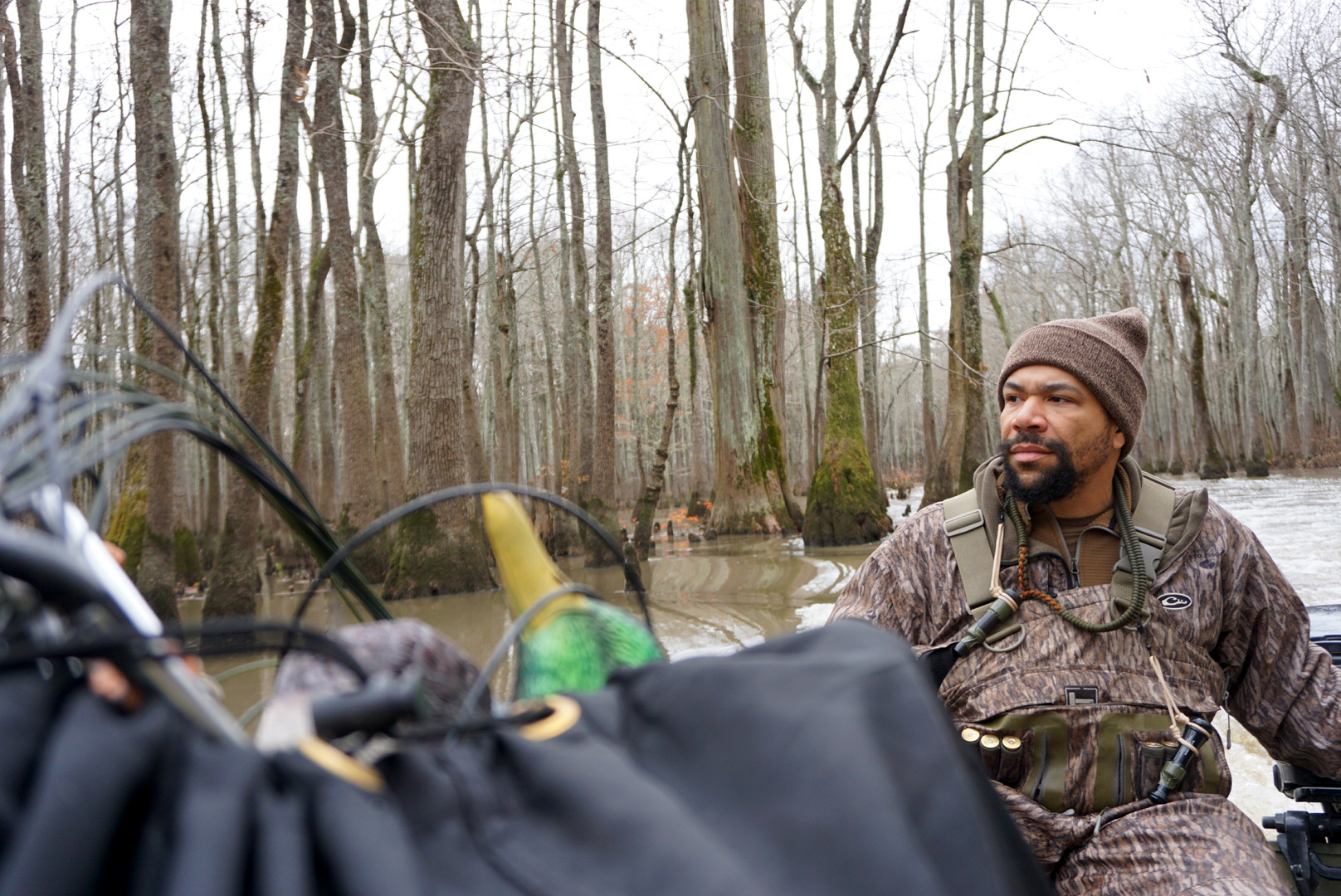
“There’s a level of interaction with social media that everyone has now, as a normative function,” Wilkins says. “I’m still trying to figure out what the right boundary markers are for me within that journey, and I lean towards doing less as opposed to more.”
Read Next: A Rookie’s Guide to Hunting Social Media
The BDR Instagram account is chock-full of tips on preparing wild game, shoutouts to his podcast and its many guests, information on BDR’s guided hunts, and opportunities to connect with other people who either already share his passions or want to learn how to. In other words, it’s an example of someone using social media for a higher purpose.
“I think it’s about some level of shared ethos,” Wilkins says. “It’s about giving a shit about conservation. It’s about the hunt being about way more than just the act of killing something. It keeps you relevant to people, which is much more how I view it. It’s more about waving to people occasionally and saying ‘Hey. This is what I’m up to, if you’re interested in taking a look.’”

